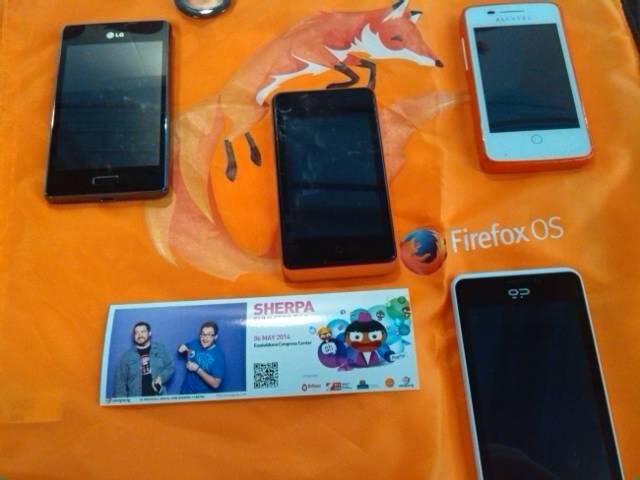El martes 6 de mayo de 2014 estuve en el Sherpa Summit, un evento organizado por la gente detrás de la aplicación Sher.pa (un «asistente personal»), representando a Mozilla, junto con Osoitz y Patxi, de Librezale.
En el stand, accesible por todo el mundo desde las 9:30 de la mañana hasta las 18 de la tarde, pasaron decenas de personas preguntando por los terminales Firefox OS que tenemos disponibles en nuestra «exposición»: ZTE Open C, Alcatel OneTouch, LG Fireweb, Geeksphone Keon y Geeksphone Peak. Nos faltó una tablet para mostrar a todo el mundo otro tamaño de pantalla y una homescreen un poco diferente. Pegatinas, chapas y alguna que otra calcamonía fueron entregadas a los fieles devotos del panda (zorro) rojo que se acercaron.

Stand. Firefoxes ready to rock.
A las 10:15 de la mañana tuve una charla enmarcada en el track de Apps móviles, a pesar de que quedó bastante enfocada sobre HTML5, mostré cómo crear una pequeña aplicación para Firefox OS en menos de un minuto, seleccionando la web de RTVE (¡gracias a Salva!) para móviles, la cual es muy sencilla de guardar (Control-S, como index.html y crear un minimanifest, el resto «just works») y tunear para que se vea bien.
Finalmente, terminamos a las 6 de la tarde, dando las gracias a la organización por dejarnos venir un año más (¡junto con la posibilidad de dar una charla!) y a Francisco Picolini por su siempre ayuda en estos eventos, aunque esta vez se quedara en Madrid organizando cosas más importantes.
Laster arte!








